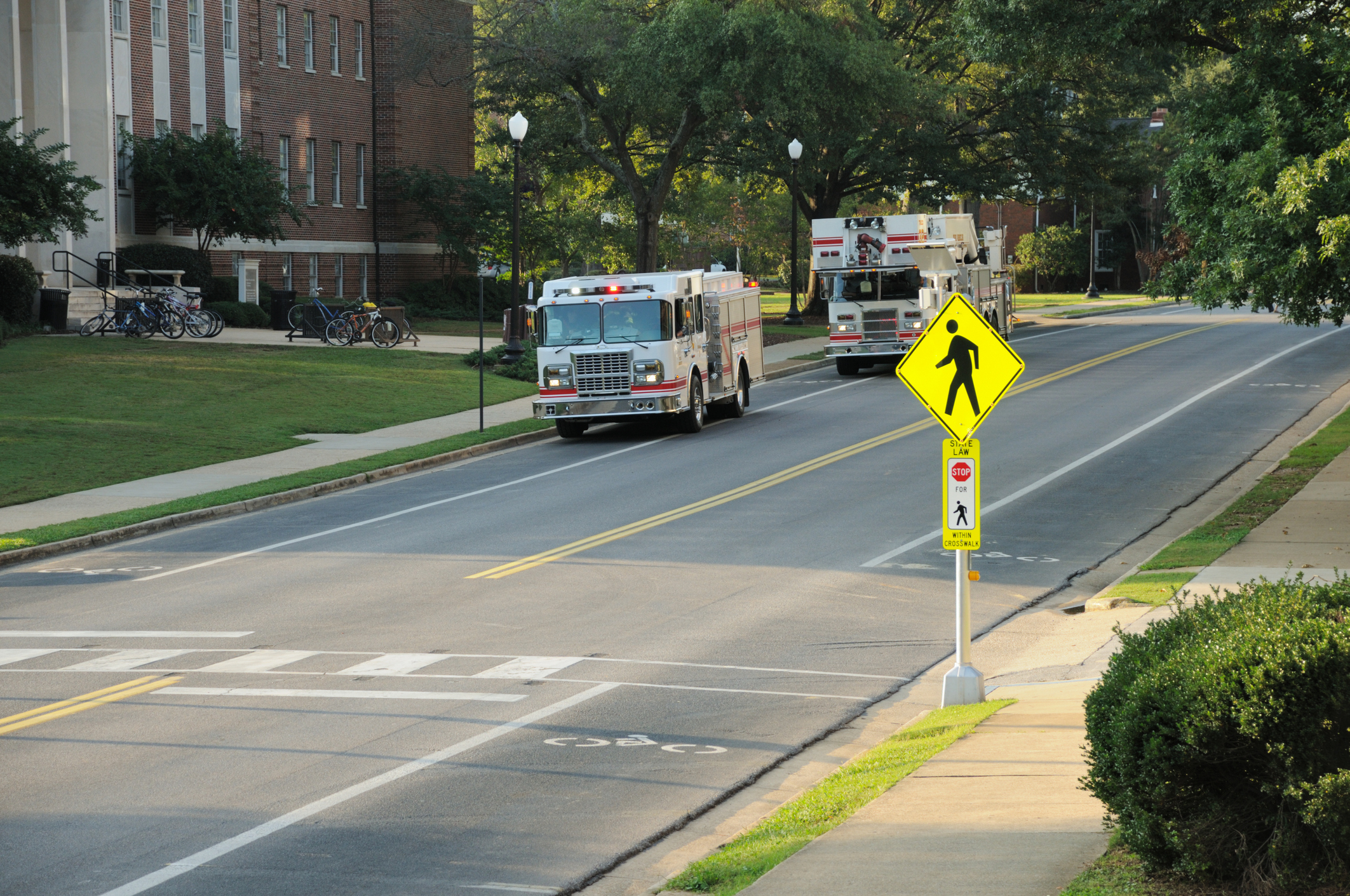Washington, D.C., June 17, 2015– According to The Facts Hurt: A State-By-State Injury Prevention Policy Report, West Virginia has the highest numbers of injury-related deaths of any state (97.9 per 100,000 people), at a rate more than double of the state with the lowest rate, New York (40.3 per 100,000 people). In the past four years, the number of injury deaths increased significantly in 17 states, remained stable in 24 states and decreased in 9 states. The national rate is 58.4 per 100,000 people. Injuries are the leading cause of death for Americans ages 1 to 44 – and are responsible for nearly 193,000 deaths per year.
Drug overdoses are the leading cause of injury deaths in the United States, at nearly 44,000 per year. These deaths have more than doubled in the past 14 years, and half of them are related to prescription drugs (22,000 per year). Overdose deaths now exceed motor vehicle-related deaths in 36 states and Washington, D.C.
West Virginia has the highest number of drug overdose deaths (33.5 per 100,000 people) – accounting for more than one-third of the state’s overall injury deaths, rates are lowest in North Dakota (at 2.6 per 100,000 people). In the past four years, drug overdose death rates have significantly increased in 26 states and Washington, D.C. and decreased in six.
The Facts Hurt report, released today by the Trust for America’s Health (TFAH) and the Robert Wood Johnson Foundation (RWJF) also includes a report card of 10 key indicators of leading evidence-based strategies that help reduce injuries and violence. The indicators were developed in consultation with top injury prevention experts from the Safe States Alliance and the Society for the Advancement of Violence and Injury Research (SAVIR).
Twenty-nine states and Washington, D.C. scored a five or lower out of the 10 key injury-prevention indicators. New York received the highest score of nine out of a possible 10, while four states scored the lowest, Florida, Iowa, Missouri and Montana, with two out of 10.
“Injuries are not just acts of fate. Research shows they are pretty predictable and preventable,” said Jeffrey Levi, PhD, executive director of TFAH. “This report illustrates how evidence-based strategies can actually help prevent and reduce motor vehicle crashes, head injuries, fires, falls, homicide, suicide, assaults, sexual violence, child abuse, drug misuse, overdoses and more. It’s not rocket science, but it does require common sense and investment in good public health practice.”
Some key findings include:
- Drug abuse: More than 2 million Americans misuse prescription drugs. The prescription drug epidemic is also contributing to an increase in heroin use; the number of new heroin users has doubled in the past seven years. Key report indicators include:
- 34 states and Washington, D.C. have “rescue drug” laws in place to expand access to, and use of naloxone – a prescription drug that can be effective in counteracting an overdose – by lay administrators. This is double the number of states with these laws in 2013 (17 and Washington, D.C.)
- While every state except Missouri has some form of Prescription Drug Monitoring Program (PDMP) in place to help reduce doctor shopping and mis-prescribing, only half (25) require mandatory use by healthcare providers in at least some circumstances.
- Motor vehicle deaths: Rates have declined 25 percent in the past decade (to 33,000 per year). Key report indicators include:
- 21 states have drunk driving laws that require ignition interlocks for all offenders;
- While most states have Graduated Drivers Licenses that restrict times when teens can drive, 10 states restrict nighttime driving for teens starting at 10 pm; and
- 35 states and Washington, D.C. require car safety or booster seats for children up to age 8.
- Homicides: Rates have dropped 42 percent in the past 20 years (to 16,000 per year). The rate of Black male youth (ages 10 to 24) homicide victims is 10 times higher than for the overall population. One in three female homicide victims is killed by an intimate partner. A key report indicator includes:
- 31 states have homicide rates at or below the national goal of 5.5 per every 100,000 people.
- Suicides: Rates have remained stable for the past 20 years (41,000 per year). More than one million adults attempt suicide and 17 percent of teens seriously consider suicide each year. Seventy percent of suicides deaths are among White males.
- Falls: One in three Americans over the age of 64 experiences a serious fall each year, falls are the most common nonfatal injuries, and the number of fall injuries and deaths are expected to increase as the Baby Boomer cohort ages. A key report indicator includes:
- 13 states have unintentional fall-related death rates under the national goal (of 7.2 per 100,000 people – unintentional falls).
- Traumatic brain injuries (TBIs) from sports/recreation among children have increased by 60 percent in the past decade.
“Injuries are persistent public health problems. New troubling trends, like the prescription drug overdose epidemic, increasing rates of fall-related deaths and traumatic brain injuries, are serious and require immediate response,” said Corrine Peek-Asa, MPH, PhD, Professor and Associate Dean for Research at the College of Public Health, University of Iowa. “But, we cannot afford to neglect or divert funds from ongoing concerns like motor vehicle crashes, drownings, assaults and suicides. We spend less than the cost of a box of bandages, at just $.028 per person per year on core injury prevention programs in this country.”
“This report provides state leaders and policymakers with the information needed to make evidence-based decisions to not only save lives, but also save state and taxpayers’ money,” said Amber Williams, Executive Director of the Safe States Alliance. “The average injury-related death in the U.S. costs over $1 million in medical costs and lost wages. Preventing these injuries will allow for investments in other critical areas including education and infrastructure.”
The report provides a series of specific, research-based recommendations for reducing the harm caused by a range of types of injury and violence – with a focus on prevention. It was supported by a grant from the Robert Wood Johnson Foundation and is available on TFAH’s website.
Score Summary:
A full list of all of the indicators and scores, listed below, is available along with the full report on TFAH’s web site. For the state-by-state scoring, states received one point for achieving an indicator or zero points if they did not achieve the indicator. Zero is the lowest possible overall score, 10 is the highest.
- 9 out of 10: New York
- 8 out of 10: Delaware
- 7 out of 10: California, New Jersey, North Carolina, Tennessee, Washington and West Virginia
- 6 out of 10: Alaska, Colorado, Hawaii, Indiana, Kentucky, Louisiana, Maine, Minnesota, Nevada, New Mexico, Oregon, Rhode Island and Virginia
- 5 out of 10: Alabama, Arkansas, Connecticut, Georgia, Illinois, Kansas, Massachusetts, Oklahoma, Utah, Vermont and Wisconsin
- 4 out of 10: Arizona, District of Columbia, Idaho, Maryland, Michigan, Mississippi, New Hampshire, North Dakota and Pennsylvania
- 3 out of 10: Nebraska, Ohio, South Carolina, South Dakota, Texas and Wyoming
- 2 out of 10: Florida, Iowa, Missouri and Montana
The 10 indicators include:
- Does the state have a primary seat belt law? (34 states and Washington, D.C. meet the indicator and 16 states do not.)
- Does the state require mandatory ignition interlocks for all convicted drunk drivers, even first-time offenders? (21 states meet the indicator and 29 states and Washington, D.C. do not.)
- Does the state require car seats or booster seats for children up to at least the age of 8? (35 states and Washington, D.C. meet the indicator and 15 do not.)
- Does the state have Graduated Driver Licensing laws – restricting driving for teens starting at 10 pm? (11 states meet the indicator and 39 states and Washington, D.C. do not. Note a number of other states have restrictions starting at 11 pm or 12 pm.)
- Does the state require bicycle helmets for all children? (21 states and Washington, D.C. meet the indicator and 29 states do not.)
- Does the state have fewer homicides than the national goal of 5.5 per 100,000 people established by the U.S. Department of Health and Human Services (HHS) (2011-2013 data)? (31 states meet the indicator and 19 states and Washington, D.C. do not.)
- Does the state have a child abuse and neglect victimization rate at or below the national rate of 9.1 per 1,000 children (2013 data)? (25 states meet the indicator and 25 states and Washington, D.C. do not.)
- Does the state have fewer deaths from unintentional falls than the national goal of 7.2 per 100,000 people established by HHS (2011-2013 data)? (13 states meet the indicator and 37 states and Washington, D.C. do not.)
- Does the state require mandatory use of data from the prescription drug monitoring program by at least some healthcare providers? (25 states meet the indicator and 25 states and Washington, D.C. do not.)
- Does the state have laws in place to expand access to, and use of, naloxone, an overdose rescue drug by laypersons? (34 states and D.C. meet the indicator and 16 states do not.)
STATE-BY-STATE INJURY DEATH RANKINGS
Note: Rates include all injury deaths for all ages for injuries caused by injuries and violence (intentional and unintentional). They are based on a methodology used to compare rates across all states – including using three-year averages of the most recent data (2011-2013). National data sources may differ from how some states calculate their data (because of use of different time frames, inclusion/exclusions, etc.). 1 = Highest rate of injury fatalities, 51 = lowest rate of injury fatalities. The 2011-2013 data are from the U.S. Centers for Disease Control and Prevention’s Web-based Injury Statistics Query and Reporting System — age-adjusted using the year 2000 to standardize the data. This methodology, recommended by the CDC, compensates for any potential anomalies or unusual changes due to the specific sample in any given year in any given state. States with statistically significant (p<0.05) increases since 2007-2009 are noted with an asterisk (*), while states with a statistically significant decrease are noted with two asterisks (**).
1. West Virginia (97.9*); 2. New Mexico (92.7**); 3. Oklahoma (88.4*); 4. Montana (85.1); 5. Wyoming (84.6); 6. Alaska (83.5); 7. Kentucky (81.7*); 8. Mississippi (81.0); 9. Tennessee (76.7); 10. Arkansas (75.3); 11. Louisiana (75.3**); 12. Arizona (73.4); 13. Alabama (73.3); 14. Utah (72.8*); 15. Missouri (72.4); 16. Colorado (70.7); 17. South Carolina (69.9); 18. Idaho (69.1); 19. (tie) Nevada (67.1**) and South Dakota (67.1*); 21. Vermont (66.0); 22. Kansas (65.0*); 23. Pennsylvania (64.3*); 24. Ohio (63.9*); 25. Indiana (63.7*); 26. North Carolina (62.1**); 27. Wisconsin (62.0*); 28. Oregon (61.8); 29. Florida (61.3**); 30. Michigan (60.6*); 31. Maine (60.1); 32. Delaware (60.0); 33. North Dakota (59.3); 34. Rhode Island (58.6*); 35. Georgia (58.1**); 36. Washington (57.1); 37. New Hampshire (56.6*); 38. Iowa (56.4*); 39. Texas (55.3**); 40. Minnesota (54.9*); 41. District of Columbia (53.7); 42. Maryland (53.4**); 43. Nebraska (52.5); 44. Virginia (52.0); 45. Illinois (50.0); 46. Connecticut (49.6); 47. Hawaii (48.8); 48. California (44.6**); 49. New Jersey (44.0*); 50. Massachusetts (42.9); 51. New York (40.3*).
STATE-BY-STATE DRUG OVERDOSE DEATH RANKINGS
Note: Rates include drug overdose deaths, for 2011-2013, a three-year average. 1 = Highest rate of drug overdose fatalities, 51 = lowest rate of drug overdose fatalities. States with statistically significant (p<0.05) increases since 2007-2009 are noted with an asterisk (*), while states with a statistically significant decrease are noted with two asterisks (**). States with a § have an overdose death rate higher than the state’s overall motor vehicle mortality rate for 2011 to 2013.
1. West Virginia (33.5*§); 2. (tie) Kentucky (24.6*§) and New Mexico (24.6§); 4. Nevada (21.6*§); 5. Utah (21.5§); 6. Oklahoma (20.0§); 7. Rhode Island (19.4*§); 8. Ohio (19.2*§); 9. Pennsylvania (18.9§); 10. Arizona (17.8*§); 11. Tennessee (17.7*§); 12. Delaware (17.1*§); 13. Wyoming (16.4*); 14. Missouri (16.2*§); 15. Indiana (16.0*§); 16. Colorado (15.5§); 17. Alaska (15.3§); 18. (tie) Michigan (14.6§) and New Hampshire (14.6§); 20. Louisiana (14.5§); 21. (tie) District of Columbia (13.8*§) and Massachusetts (13.8§); 23. (tie) Florida (13.7**§) and Washington (13.7**§); 25. Montana (13.6); 26. Maryland (13.3*§); 27. (tie) New Jersey (13.2*§) and North Carolina (13.2*§); 29. (tie) Connecticut (13.1*§) and Wisconsin (13.1*§); 31. Vermont (13.0§); 32. South Carolina (12.9§); 33. Idaho (12.7*); 34. Oregon (12.4§); 35. Arkansas (12.3**); 36. (tie) Alabama (12.2**) and Maine (12.2**§); 38. Illinois (11.8*§); 39. Hawaii (11.4*§); 40. Kansas (11.2); 41. (tie) California (10.7*§) and Georgia (10.7*) and Mississippi (10.7); 44. New York (10.4*§); 45. (tie) Texas (9.6) and Virginia (9.6*); 47. Minnesota (9.3*§); 48. Iowa (8.8*); 49. Nebraska (7.2*); 50. South Dakota (6.5); 51. North Dakota (2.6**).
Trust for America’s Health is a non-profit, non-partisan organization dedicated to saving lives by protecting the health of every community and working to make disease prevention a national priority.
For more than 40 years the Robert Wood Johnson Foundation has worked to improve health and health care. We are striving to build a national Culture of Health that will enable all to live longer, healthier lives now and for generations to come. For more information, visit www.rwjf.org. Follow the Foundation on Twitter at www.rwjf.org/twitter or on Facebook at www.rwjf.org/facebook.
The Safe States Alliance is a national, non-profit organization and professional association whose mission is to strengthen the practice of injury and violence prevention.
SAVIR is a national professional organization dedicated to fostering excellence in the science of preventing and treating violence and injury. Our vision is a safer world through violence and injury research and its application to practice.



